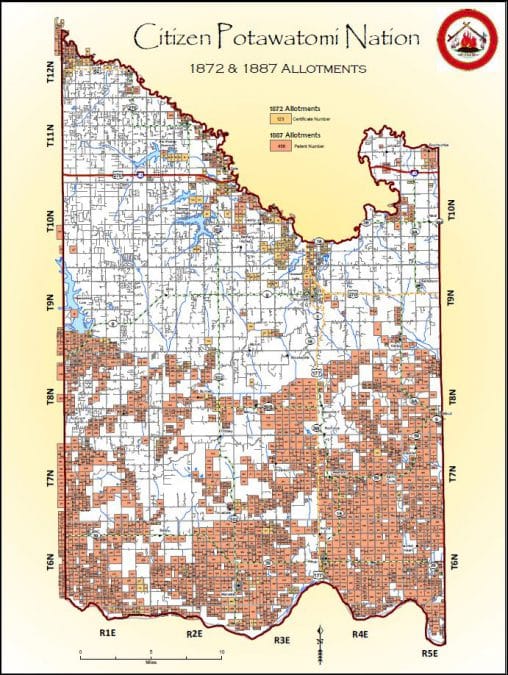As the director of the Citizen Potawatomi Nation Real Estate Services Department, Charles Meloy oversees the day-to-day management of Tribal land. He sat down with the Hownikan to discuss how CPN uses its land today and how the department functions.

How has the amount of land CPN owns changed from the 1800s to now?
“When the land was owned in common, we had approximately 500,000 acres. After allotment, the Tribe wound up, through individual ownerships, with about 250,000 acres. Over the 120 year period, through six generations, the ownership of those allotments have been divided down to where currently there are only about 77 allotments left, and some of those allotments may have as many as 100 or 150 undivided owners in the allotment.”
How does CPN manage its land today?
“The land today is managed depending on the ownership of the land. And when I say ownership, it’s the way the land is deeded. The original allotments are held in trust, and the (Bureau of Indian Affairs) has trust responsibility toward those allotments. When the ownership got down to where it was unmanageable in the ownership, then the bureau took over the responsibility for the management of the land, and then CPN subsequently compacted that management responsibility from the bureau. Historically, CPN had jurisdiction over all of the 500,000 acres. Now, our jurisdictional area where we have total sovereignty — total authority — is on those parcels of land that are in trust for the Citizen Potawatomi Nation. And today, that totals about 14,000 acres.”
What does putting land into trust mean, and why would the Nation want to do that?
“Putting land into trust changes the ownership status from ‘owned by the Citizen Potawatomi Nation’ to ‘owned by the United States of America in trust for the Citizen Potawatomi Nation.’ The first and most immediate thing that happens is that that strips away all local and state control, and this is why we’re able to game and do a variety of things on that land. Secondly, once it goes into trust, it becomes part of the land over which we have total jurisdiction and total sovereignty. Now, the important reasons for doing this is number one — it’s an expression of our sovereignty. It’s an expression of our self-governance. … And it puts the land in an ownership status that it would be very difficult for a future short-sighted administration to dispose of it. It’s difficult to sell once it’s put into trust.”
What are some main ways CPN uses its land today?
“Of the total land base that we’re responsible for, part of that land is given over to governmental uses, administration, the reunion grounds and those kinds of things. Part of the land is given over to our enterprises — the grocery store, the golf course, the casinos. Part of the land, which hasn’t been developed as such with a building and roads, etc., still is in agricultural use. We row crop, and a lot of it is in hay production. When we buy a new parcel of land, first thing we do is solve any problems that may be on that land. (If) there are environmental issues, we take care of those. (If) fences are in the wrong place, we have dilapidated buildings and so forth, we take care of those. And then we try to get the land into some type of economic production.”
How does the Real Estate Services Department divide work?
“The department is basically divided into two gross categories. One part of the department, all of their activities relate to that trust responsibility that we have compacted from the bureau. And we oversee and manage all of those trust lands that would fall under that trust responsibility of the bureau. And this relates not only to the individual allotments that are left from the 1887 allotments, but it relates to the land that we put into trust now. Then, the other half of the department relates to the non-trust lands, which as we purchase new properties, they’re purchased in fee. … And we start that process of putting them into trust. And when we decide what it’s going to be used for, typically the management of that piece of land is turned over to whatever department is going to occupy it. And they take over and are responsible from that point. We’re also expanding our ownership into those original trust allotments, and any individual Tribal member who owns in an allotment and who is interested in selling their undivided ownership, the Tribe will buy it. We always pay more than appraised value. And that way, it’s added to the Tribal land base, and it’s more easily managed.”
For more information about the Real Estate Services Department, visit cpn.news/realestate.
